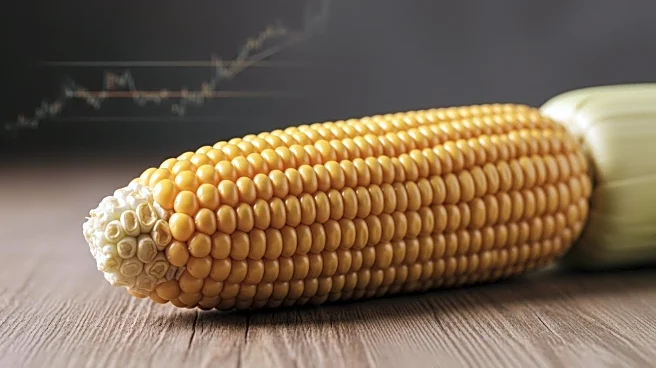What's Happening?
The USDA has released estimates indicating a record-large corn crop for 2025, with soybean production also high at 4.3 billion bushels. This surge in production is creating concerns about storage capacity, especially as China is not currently purchasing U.S. soybeans, leading to an increased need for domestic storage. Naomi Blohm, a senior market adviser, suggests that this could result in grain being stored on the ground at local elevators, affecting cash basis prices. Arlan Suderman, chief commodities economist at StoneX, highlights the particular challenges in the northwest Midwest, where soybeans are typically exported via railcar. With China absent from the market, these soybeans will need to be stored, exacerbating storage issues.
Why It's Important?
The potential storage crunch could have significant economic implications for U.S. farmers and the agricultural sector. With an oversupply of grain, cash basis prices may remain unattractive, impacting farmers' profitability. The situation could also affect the broader agricultural supply chain, including grain elevators and end users. Farmers may need to explore alternative storage solutions, such as grain bagging systems, to manage the surplus. The absence of Chinese buyers further complicates the market dynamics, potentially leading to regional disparities in storage and pricing.
What's Next?
Farmers are advised to develop storage plans ahead of the 2025 harvest to avoid mid-harvest surprises. Engaging in early conversations with buyers could help farmers capture basis improvements and market carry opportunities. Additionally, exploring indoor storage options and investing in grain bagging systems may provide temporary relief. The agricultural community will need to monitor market conditions closely and adapt strategies to manage the anticipated surplus effectively.












